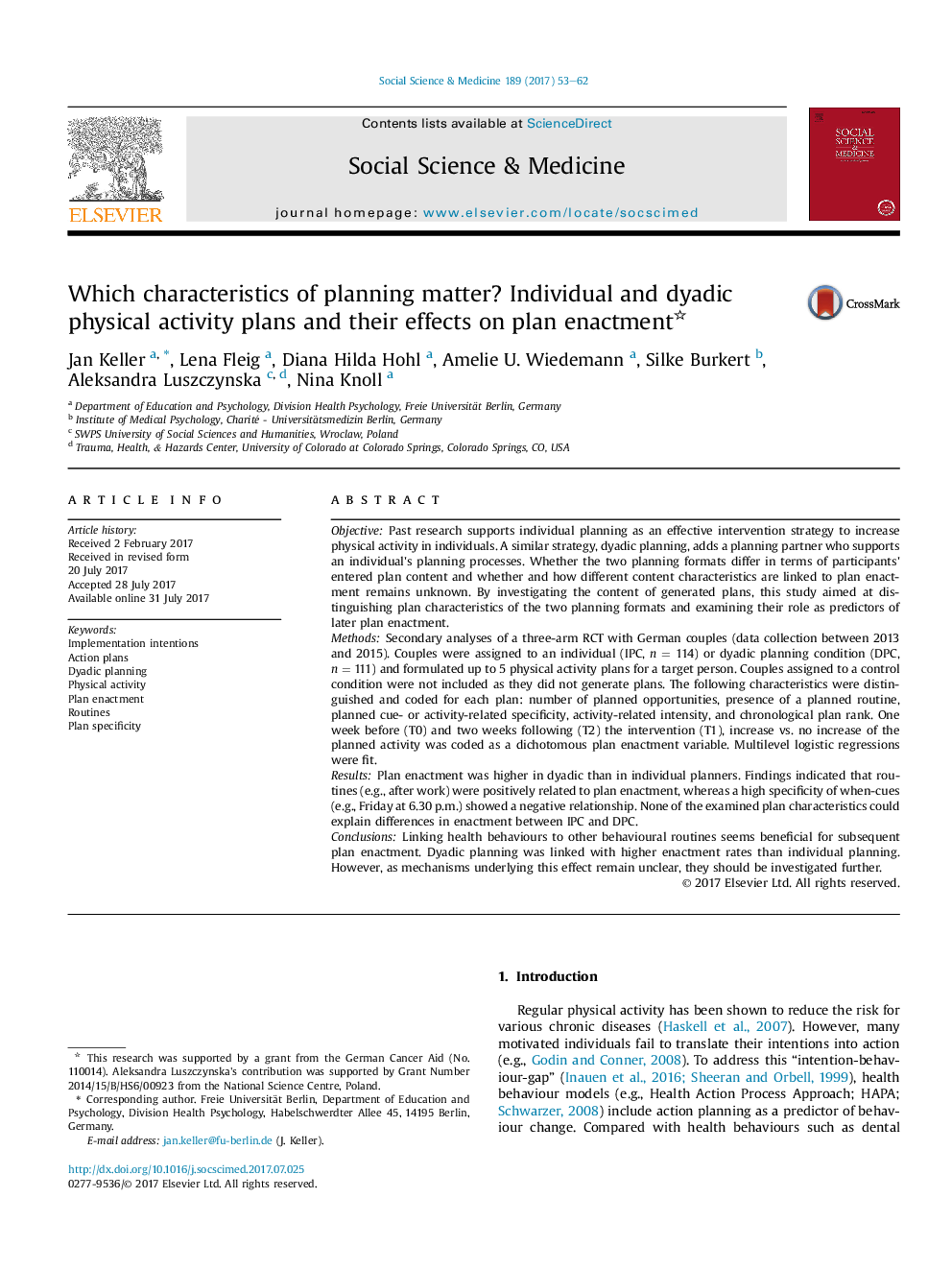| کد مقاله | کد نشریه | سال انتشار | مقاله انگلیسی | نسخه تمام متن |
|---|---|---|---|---|
| 5046429 | 1475980 | 2017 | 10 صفحه PDF | دانلود رایگان |

- Characteristics of plans to increase physical activity predicted plan enactment.
- Dyadic (vs. individual) planners showed more plan enactment.
- Formulating a routine in plans was beneficial for plan enactment.
- Plans with highly specific time cues were less likely to be enacted.
- Initially formulated plans were more likely to be enacted than subsequent plans.
ObjectivePast research supports individual planning as an effective intervention strategy to increase physical activity in individuals. A similar strategy, dyadic planning, adds a planning partner who supports an individual's planning processes. Whether the two planning formats differ in terms of participants' entered plan content and whether and how different content characteristics are linked to plan enactment remains unknown. By investigating the content of generated plans, this study aimed at distinguishing plan characteristics of the two planning formats and examining their role as predictors of later plan enactment.MethodsSecondary analyses of a three-arm RCT with German couples (data collection between 2013 and 2015). Couples were assigned to an individual (IPC, n = 114) or dyadic planning condition (DPC, n = 111) and formulated up to 5 physical activity plans for a target person. Couples assigned to a control condition were not included as they did not generate plans. The following characteristics were distinguished and coded for each plan: number of planned opportunities, presence of a planned routine, planned cue- or activity-related specificity, activity-related intensity, and chronological plan rank. One week before (T0) and two weeks following (T2) the intervention (T1), increase vs. no increase of the planned activity was coded as a dichotomous plan enactment variable. Multilevel logistic regressions were fit.ResultsPlan enactment was higher in dyadic than in individual planners. Findings indicated that routines (e.g., after work) were positively related to plan enactment, whereas a high specificity of when-cues (e.g., Friday at 6.30 p.m.) showed a negative relationship. None of the examined plan characteristics could explain differences in enactment between IPC and DPC.ConclusionsLinking health behaviours to other behavioural routines seems beneficial for subsequent plan enactment. Dyadic planning was linked with higher enactment rates than individual planning. However, as mechanisms underlying this effect remain unclear, they should be investigated further.
Journal: Social Science & Medicine - Volume 189, September 2017, Pages 53-62